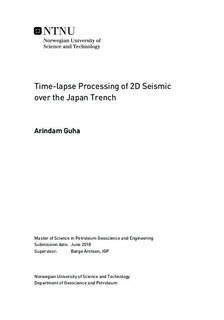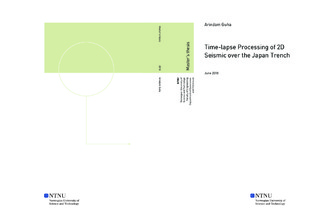| dc.description.abstract | The seismic surveys SR97-101 (baseline) and D19 (monitor), acquired over the Japan
Trench, were processed using an open-source software (Madagascar) with aims on
detecting changes from the Tohoku-Oki earthquake. The surveys were interpolated to
a datum plane using a modified Shepard algorithm together with differential NMO
function to fix the source and receiver coordinates. The data were then processed
through frequency filter, despiking, debubble filter, and top mute. After sorting the
data into CMP gathers, velocity scanning and picking were used with inner muted
semblances in order to avoid picking of multiples when using an automatic picking
algorithm. The data were NMO corrected with smoothed velocity models where the
monitor survey had refractional events being overcorrected at shallow depths, which
were solved by reducing the fold prior to stacking. The data were then stacked to
observe the first seismic images of the subduction zone.
The CMP gathers were then processed through a Kirchhoff pre-stack time migration
and an experimental depth migration was performed using the full acoustic wave
pre-stack migration on the common shot gathers. Similar overcorrections were
observed on the shallow depth common offset image gathers obtained from the time
migration, and where the monitor survey went through similar procedures done prior
to stacking. The migrated stacks were converted to SEGY format for interpretation in
Petrel where the baseline survey was shifted to the east due to problems with the
navigation and to make the stacks comparable. Horst and graben structures, thrust
complex, and deformations zone were characterized on the baseline survey and
compared with the monitor survey. 11.84 m uplift was observed on the backstop
interface on the Okhotsk Plate while 5.92 m subsidence was observed on the Oceanic
Plate near the trench with high uncertainties due to the navigational shift. Large
changes on the horst structure on the Okhotsk Plate were also observed, but
discussed to be unrealistic. The depth migration was unstable due to unstable depth
velocity models and resulted in depth errors, but managed to image reflectors at
shallow depth with better resolution compared to the time migration. | |

